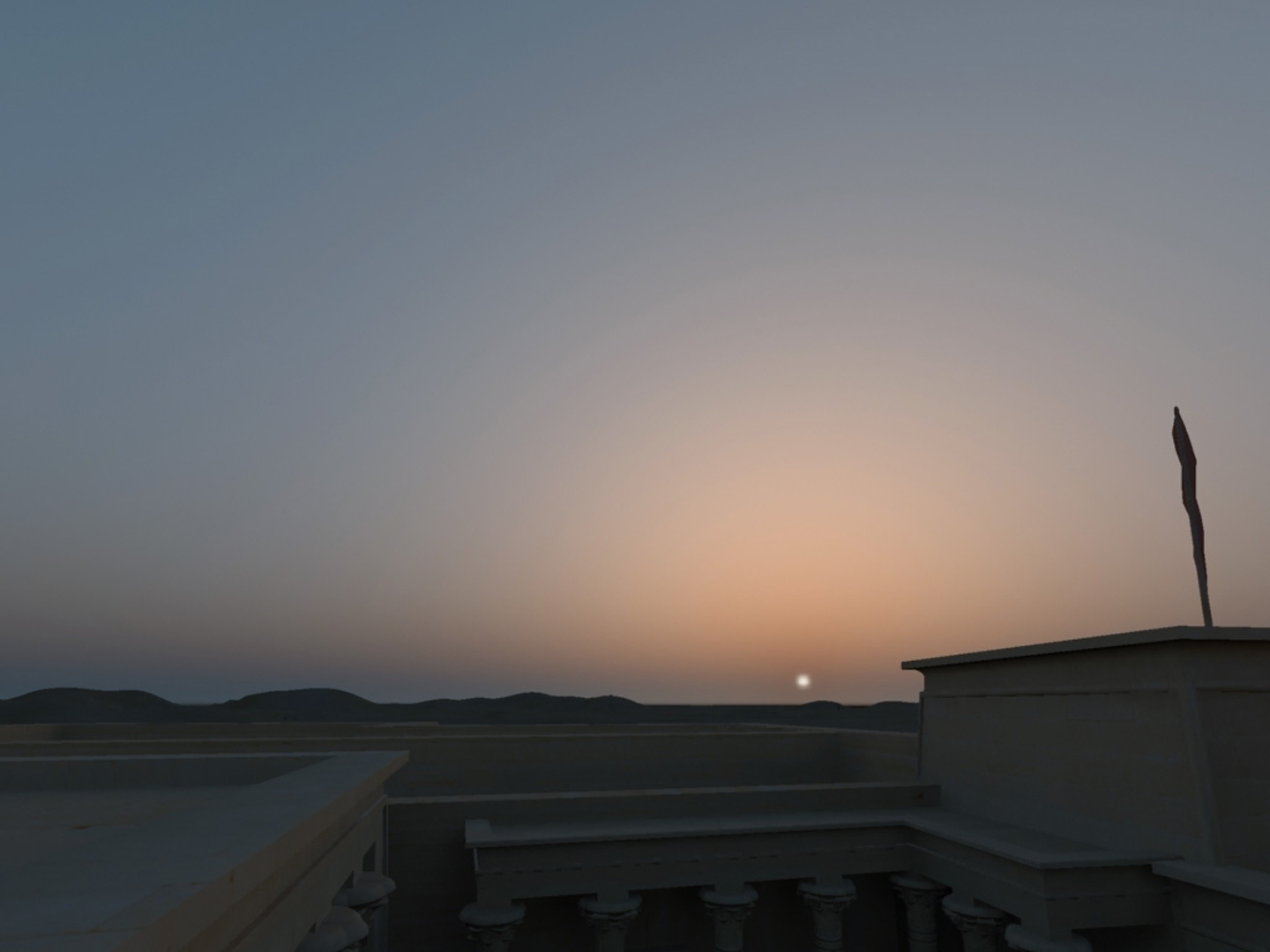“An analytic model for full spectral sky-dome radiance” by Hosek and Wilkie
Conference:
Type(s):
Title:
- An analytic model for full spectral sky-dome radiance
Presenter(s)/Author(s):
Abstract:
We present a physically-based analytical model of the daytime sky. Based on the results of a first-principles brute force simulation of radiative transfer in the atmosphere, we use the same general approach of fitting basis function coefficients to radiance data as the Perez and Preetham models do. However, we make several modifications to this process, which together significantly improve the rendition of sunsets and high atmospheric turbidity setups — known weak points of the Preetham model. Additionally, our model accounts for ground albedo, and handles each spectral component independently. The latter property makes it easily extensible to the near ultraviolet range of the spectrum, so that the daylight appearance of surfaces that include optical brighteners can be properly predicted. Due to its similar mathematical properties, the new model can be used as a drop-in replacement of the Preetham model.
References:
1. Cornette, W. M., and Shanks, J. G. 1992. Physically reasonable analytic expression for the single-scattering phase function. Appl. Opt. 31, 16 (Jun), 3152–3160.Google ScholarCross Ref
2. Eldridge, R. G. 1961. A few fog drop-size distributions. Journal of the Atmospheric Sciences 18, 5, 671–676.Google Scholar
3. Elek, O., and Kmoch, P. 2010. Real-time spectral scattering in large-scale natural participating media. In Proceedings of Spring Conference on Computer Graphics 2010, Comenius University, Bratislava, H. Hauser and R. Klein, Eds., 83–90. Google ScholarDigital Library
4. Habel, R., Mustata, B., and Wimmer, M. 2008. Efficient spherical harmonics lighting with the Preetham skylight model. In Eurographics 2008 – Short Papers, Eurographics Association, K. Mania and E. Reinhard, Eds., 119–122.Google Scholar
5. Haber, J., Magnor, M., and Seidel, H.-P. 2005. Physically-based simulation of twilight phenomena. ACM Transactions on Graphics 24 (October), 1353–1373. Google ScholarDigital Library
6. Hulst, H., and Hulst, H. 1957. Light scattering by small particles. Structure of matter series. Dover Publications.Google Scholar
7. ISO/CIE. 2004. Technical standard ISO 15469:2004 (CIE S 011/E:2003) “Spatial distribution of daylight — CIE standard general sky”. Jointly published by ISO and CIE.Google Scholar
8. Matkovic, K., and Neumann, L. 1996. Interactive calibration of the mapping of global illumination values to display devices. In 12th Spring Conference on Computer Graphics, Comenius University, Bratislava, Slovakia, 155–161.Google Scholar
9. Mätzler, C. 2002. MATLAB functions for Mie scattering and absorption. Research report 2002-8, Institut für Angewandte Physik, Universität Bern, Switzerland.Google Scholar
10. McCartney, E. 1976. Optics of the Atmosphere. Wiley.Google Scholar
11. Nishita, T., Sirai, T., Tadamura, K., and Nakamae, E. 1993. Display of the earth taking into account atmospheric scattering. In Proceedings of the 20th annual conference on Computer graphics and interactive techniques, ACM, New York, NY, USA, SIGGRAPH ’93, 175–182. Google ScholarDigital Library
12. Nishita, T., Dobashi, Y., and Nakamae, E. 1996. Display of clouds taking into account multiple anisotropic scattering and sky light. In Proceedings of the 23rd annual conference on Computer graphics and interactive techniques, ACM, New York, NY, USA, SIGGRAPH ’96, 379–386. Google ScholarDigital Library
13. Perez, R., Seals, R., and Michalsky, J. 1993. All-weather model for sky luminance distribution–preliminary configuration and validation. Solar Energy 50, 3, 235–245.Google ScholarCross Ref
14. Preetham, A. J., Shirley, P., and Smits, B. 1999. A practical analytic model for daylight. In Proceedings of the 26th annual conference on Computer graphics and interactive techniques, ACM Press/Addison-Wesley Publishing Co., New York, NY, USA, SIGGRAPH ’99, 91–100. Google ScholarDigital Library
15. Raab, M., Seibert, D., and Keller, A. 2008. Unbiased global illumination with participating media. In Monte Carlo and Quasi-Monte Carlo Methods 2006, A. Keller, S. Heinrich, and H. Niederreiter, Eds. Springer Berlin Heidelberg, 591–605.Google Scholar
16. Wilkie, A., Ulbricht, C., Tobler, R. F., Zotti, G., and Purgathofer, W. 2004. An analytical model for skylight polarization. In Rendering Techniques, Eurographics Association, A. Keller and H. W. Jensen, Eds., 387–398. Google ScholarDigital Library
17. Zotti, G., Wilkie, A., and Purgathofer, W. 2007. A critical review of the Preetham skylight model. In WSCG ‘ 2007 Short Communications Proceedings I, University of West Bohemia, V. Skala, Ed., 23–30.Google Scholar





